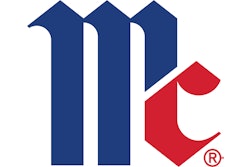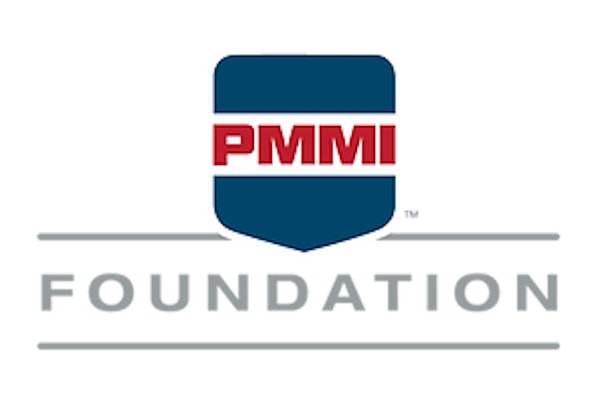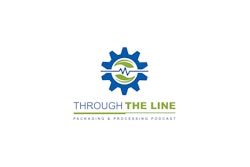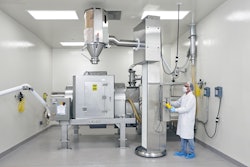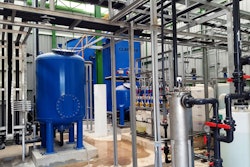Keren Sookne, director of Editorial Content for Healthcare Packaging, wrestles with how the variety of complex containers that ultimately end up as life sciences packaging can become more sustainable. Sookne discusses the inroads healthcare packaging has already made with sustainability, the repurposing of some forms of life sciences waste and where the industry still needs to catch up with traditional CPG-based packagers.
View the Emerging EU Sustainability Regulations for Packaging.
To subscribe, rate, review and find more unPACKED podcast episodes, visit pmmi.org/podcast or find us on Apple podcasts, Spotify or iHeart Radio.
 | Read the full transcript below. |
Sean:
We're talking healthcare, we're talking sustainability and I was thinking about this before we came on here about COVID home tests. We're obviously in the age of COVID and no need to go into that but with the home tests, we had one in our house and I literally remember thinking this, I have a paperboard box and then I take it out and there's a plastic tray and then I take that out and there's a wrapped thing and there's a swab and that's made out of a different material and then there's the actual solution and I did actually think, I can't fathom how, as an industry segment, how healthcare even broaches this? So to start, obviously healthcare is critical, that's a COVID test. I need to know if I have it, and this is just me, this isn't obviously a hospital where this is happening dozens of times a day.
Keren:
Sure.
Sean:
It generates a significant amount of waste, but it also serves a very humane purpose so in that context how do we navigate that? And what makes it so complicated to wrap our heads around?
Keren:
Yeah, that's a good question and a good place to start, or put things in perspective. There's a good quote from a nonprofit page, this Practice Greenhealth that I think sums things up nicely and philosophically, they say the healthcare sector is both a significant contributor to the global planetary health crisis and uniquely burdened by it. So healthcare can pollute ecosystems leading to declining health, which then leads to patients requiring healthcare and one of the more unfortunate facts of that is that in some cases, a lot of the frontline communities that get the worst health effects don't have easy access to healthcare. That being said, as you were talking about the COVID test, I'll focus a little more on the material waste aspect for now so there are a number of reasons that healthcare can contribute to climate change.
Keren:
But in terms of materials, hospitals are reported to produce more than 5 million tons of waste each year. But as you said, there's a good and humane reason for that baked into those waste figures are packages and PPE that prevented infection, they delivered drugs and med devices and diagnostics safely to our family members during surgery and other procedures and they saved lives every day. As you alluded to earlier, it's a really complicated web and there's just not really one silver bullet to healthcare becoming more sustainable, it's going to have to be this really multifactor approach and it's going to require a ton of collaboration among a wide variety of stakeholders and life science manufacturers.
Sean:
Yeah, complicated doesn't even feel like a big enough word, and I say that because again, just using one package as an example, I'm supposed to put this all in a bag and throw it out because I don't contaminate some which I understand, but there's so many different things in that, that are separate waste streams and getting back on track. We've seen sustainability on the rise, it's not a buzz word anymore, you see it in stores, on packages, in the consumer good sector. How about in healthcare, for healthcare packaging? Is it something that's on the rise? Is it new or is it something that may have been laying underneath and we didn't know about it all this time?
Keren:
Yeah, so sustainability and healthcare packaging, it is definitely not a new concept, there's been folks like the Healthcare Plastics Recycling Council or the HPRC, they've been working in this arena for years. There's also more general groups like Flexible Packaging Association or the Sustainable Packaging Coalition that certainly touch on these topics in healthcare, even if generally more case studies are coming from consumer packaged goods. What's new is the push and the more widespread acceptance that healthcare packaging operations need to adopt more circular and sustainable methods and these are often in alignment with the UN Sustainable Development Goals, these can be in materials, energy and water usage, greener buildings or manufacturing processes and other facets, so sustainability is definitely more than solely recycling. There are so many ways to make these changes.
Keren:
And so I think that while it's not new, we're definitely seeing more motivation here so both in terms of regulatory, in terms of the financial sector and also just from employees and consumers themselves. I think that in the past it was just, well, it's healthcare, I need this medicine, I need to perform this procedure and obviously patient safety is critical, but I think we're just seeing this really big push from consumers who are taking second and third looks at everything they're putting in their bodies and how those products are getting to them. And there's also guidance from health systems and organizations on selecting products from life science manufacturers who are making sustainable choices so we've mentioned over healthcare packaging, Kaiser's Environmentally Preferable Purchasing or EPP initiative and Practice Greenhealth's sustainable procurement guide for health systems. In this case, it basically means that manufacturers who are making sustainable choices can be seen as having a competitive advantage for purchasing decisions, because this is what their end users are basically being guided toward.
Sean:
Okay. There was questions popping up in my head that you answered before I had a chance to ask them. The one that does pop up is the obvious one with healthcare is what about the regulatory aspect of it? Life sciences are, it's so highly regulated to begin with obviously, everything has to be sterile, everything has to... So to change from these standards to change these packages and these machines that everyone has agreed and come to agree that these are the things that work the best, and these are the safest, and this is the way we're going to do it to make sure everything works. It's much harder to mess with than it is to change the package on a toy or change the package on something in a store. How do we navigate that part?
Keren:
Yeah, and in regulatory, it could probably be its own whole podcast.
Sean:
What an exciting podcast it would be.
Keren:
Woo. Yes. Healthcare has largely been left out of some of the more common themes such as extended producer responsibility in single use plastic bands, the way that we've seen on some takeout containers, especially in Europe. But I recently covered a talk from DuPont's Terry Wagner, and the story is called Emerging EU Sustainability Regulations for any listeners who want to check that out and I'll also link to it in the notes. Two things stick out there, the European Green Deal aims reducing the net emissions of greenhouse gases to zero so this is seeking to make Europe the first climate neutral continent by 2050 and it features the Circular Economy Action Plan or CEAP, which includes substantiating grain claims made by companies and also tackling packaging and waste. And the next thing is the European Packaging and Packaging Waste Directive or PPWD, which was reinforced in 2018 with new recycling targets for 2025.
Keren:
Now I think the thing that sticks out that I'd really like to point out is that healthcare manufacturers do have some leeway, so regulators understand, as you were saying, the need for patient safety and long validation time, even nerve-wracking to think about regulators outside of the healthcare packaging community, creating laws that could affect a validated medical package and patient safety so it's good that they're open to offering some leeway. In the PPWD, there's a clear rule that allows regulators to make implementing decisions, if they say that there's a certain ban or rule regarding takeout packaging, that same rule wouldn't necessarily apply to medical and pharma packaging. EU regulators are being a little more pragmatic and they're open to listening to experts, but we're seeing regulations coming down the pipeline then involve integrating Post-Consumer Recycle content or PCR into packaging.
Keren:
And this is something I'm sure has been on the podcast before that you're seeing on the consumer side, in personal care and cannabis and more. And PCR content coming from mechanical recycling isn't used in food or medical packaging, but there's definitely promise in recycled content coming from advanced recycling and that may one day be used, even in these highly regulated applications. I think Amcor, they recently launched one of the first food packages, continuing advanced recycling recycled content and that material is used in a chocolate flow wrap application, but we're a ways off from integrating PCR into life science packaging, even if there are some regulations coming for other forms of packaging so definitely we're going to need technologies to mature as well as traceability of the materials due to EU and FDA regulations for controlling risks.
Keren:
But there is some good news, Wagner pointed out that medical packaging can be a great source of recycled content so even if we're not using these materials to go into life science packages that have been used and are now discarded, these are compulsive really high quality polymers so it's going to be really important in the next few years for the community to work with stakeholders including like sorters and recyclers to figure out the logistics of contributing that discarded healthcare packaging material to be repurposed into other forms of packaging.
Sean:
Interesting. That makes sense from a, ‘We're going to remake it into to, for lack of a better word it's not Virgin obviously, but different resin and smash it all back together into something really solid versus making up new plastics’ so I got that part. That's going to involve a whole bunch of collaboration.
Keren:
Yes.
Sean:
Obviously, collaboration's a big thing that we talk about at PMMI all the time. Companies don't want to do this by themselves, the supplier wants to be involved with the end user, ultimately the retailer and the consumers, which is a little bit different in healthcare, but same idea that we're following through so what are some of the initiatives that healthcare manufacturers could either follow or duplicate that maybe CPGs are doing or things that they've come up with on their own that healthcare manufacturers and OEMs can collaborate on together?
Keren:
There's the HPRC, which I mentioned earlier, they do ongoing work in this arena, something new and exciting. I just interviewed Bayer's Daniella Foster and we talked about the new Global Self-Care Federation and this is a collaborative effort in the self-care industry and they recently launched the Charter for Environmentally Sustainable Self-Care and to quote them, the first industrywide climate action resolution issued by the consumer health sector, and basically it seeks to minimize environmental impacts without compromising healthcare outcomes and safety and this includes partners such as Johnson & Johnson, Bayer, GSK and Sanofi. Things like this, it's a case of arising tide lifting all boats. I remember in Pat Reynold's story on Colgate's recyclable toothpaste tubes, he noted that, "Colgate is sharing its technology with anyone who wants to use it."
Keren:
And Colgate's Greg Corra said, "If our tube is going to be recycled, it's going to be because all tubes are recyclable." And I think that quote really just stuck out to me because it highlights that meaningful sustainable changes tend to be across the board sustainable changes. And then there's a few others that I'll know, I just want to say that this is not an exhaustive list. There are so many alliances and collaborative efforts to tackle various facets of sustainability but there's the Alliance to zero, which was founded to achieve net zero emissions across the Pharma supply chain that I believe Schreiner MediPharm is one of the founding members of... There's also the Alliance to modernize prescribing information and this is to reduce prescribing label waste used by physicians and pharmacists that's not consumer facing information, also The Kilmer Innovations in Packaging or KiiP group, they're seeking to foster bold innovation and med device packaging.
Keren:
And one of their core subgroups is dedicated to improving sustainability. And then as the vaccine effort is highlighted, certainly we do need innovation in vials and glass. Glass Futures, this is a UK based nonprofit that's researching the production of more sustainable glass, but like I said, this is certainly not an exhaustive list and end users are getting in on the effort too, Bayer has made a commitment to improving access to medicine so they're recognizing that those frontline communities hit hardest by climate change or double hit so they're here by climate change, but often don't have access to needed medications and health products so they have initiatives to improve access. We're seeing a lot of collaboration and this is something that will continue to cover at healthcare packaging, because it's just ongoing. It's such a massive problem with so many facets.
Sean:
Absolutely. Yeah. There's so many different pieces and we know it's complicated and I guess one thing I'm thinking of, but I just don't know if it would play out here is reusable packaging. And I know that we hit on reusable packaging a lot from the consumer good standpoint, packaging world is covered loop a ton. We've had them on the pod or on our different videos and stuff like that, that we've produced for PMMI media group. Is there anywhere that reusable packaging can fit in the healthcare sector?
Keren:
Yeah, definitely. Obviously perhaps not so much in terms of primary packaging, but in transport packaging, there's a couple organizations I'd like to highlight, there's the Reusable Packaging Association, which they cover many industries, healthcare being one of them with the goal of boosting reusable transport packaging and I know that they'll have a booth at PACK EXPO East coming up soon in the Reusable Packaging Pavilion in Philadelphia. And that will be March 21st through the 23rd.
Sean:
Nice plug. I like it.
Keren:
Yeah. If anyone is going to be out there and looking at bolstering reusables in their organization, we'll have them visit in Philadelphia in March, there's also ISTA's Pharma Committee so this is a collaborative group of end users, suppliers and service providers and basically they're working together on industry standardization for reusables in specifically temperature control, life science products. There's a lot of really unique parameters that need to be met in that arena and they're working on making things easier for companies big and small. And the technologies in reusables have really come far and so while sometimes per-unit cost may be higher for certain sustainable transport packaging, it's definitely easier to pitch to your organization, if you can improve performance in your shipping lanes and reduce product damage, packaging waste, and the major costs associated with those.
Sean:
Okay, so it's possible. Do we have, there any recent examples or examples of some of the big-wigs getting involved in this reusable packaging?
Keren:
There are definitely many, but one of the higher profile cases out there was Cardinal Health when they switched to plant-based reusable phase change materials, which for folks not familiar, the cooling packs inside of a shipper, they actually found more uniform cooling and in that same project, reusable shippers actually improved freight utilization so they have the ability to commingle refrigerated and controlled room temperature or CRT products on the same truck. And they ultimately reduced product damage and solid waste and improved freight utilization, which saved millions of dollars. That is one of the really high profile cases, but there are many out there so reusable have so many benefits and there are definitely a lot of great case studies I just want to note that to avoid painting an overly rosy picture. The industry is definitely still figuring out returns logistics.
Keren:
And we know that hospital staff, including central supply and pharmacists alike have expressed frustration at shipping in secondary packaging ways that tends to pile up at the dock or just inside so definitely the push is there and you think ultimately the more reusable packaging adoption there is just the more routine it's going to become for customers to send packaging components back. It's just like in states that charge for bags at grocery stores, consumer behavior and adoption of reusables, it just becomes the new normal and maybe we're not at that new normal point right now, but we will be just in just a matter of time.
Sean:
It's possible. Yeah. And that's obviously something we want to hear and that's great to hear beyond obviously sustainability is more than just recycling, but are there materials that are recyclable or more recyclable that are able to be used in healthcare packaging and life sciences packaging?
Keren:
Yeah, there definitely are anything last year, the past couple of years, I would say, have shown some significant progress so moving away from these, the final last year, we saw launches of recycle ready blister packages from Amcor and Klockner Pentaplast and these are for pharmaceuticals also Syntegon and Huhtamaki, they partnered on a paper blister that can be printed on both sides and the base and lidding are both recyclable in that system as well. See, also IMA Safe has developed a flexible system for packaging, a range of parenteral products and also med devices on paper trays inside cartons so this is a 100% paper based packaging with reportedly relatively low energy requirements. This is like I say with everything, definitely not an exhaustive list, but also Neopac Polyfoil MMB Mono-Material Barrier tube was granted recycle glass approval so this is a metallized polypropylene barrier and it's compliant for pharma, dental, cosmetic and food applications.
Sean:
What you're saying is that it is happening and it is possible. It's not...
Keren:
Yeah, there's also a focus on the inks being chosen because you can create this recyclable blister or container, but if you are not using inks compatible with recycling, this can really impact how recyclable that package actually is in practice. And a little more in terms of recycling news, I know that DuPont had an example where they upgraded their mechanical recycling processes for internal recycling of pre-consumer waste so not PCR, but internally and some of these recycled materials go into non-healthcare applications, but they also use recycled Tyvek for the manufacturer of plastic cores to bind the Tyvek sheet material in production.
Keren:
So definitely companies are looking at ways to cut down on waste and scrap and another thing I wanted to point out is on the advanced recycling front so some big news out of France Eastman plans to invest up to a billion dollars and in a material to material molecular recycling facility in France. So this is using the company's polyester renewal technology for typically hard recycle plastic waste that's currently being incinerated. And as you touched on before, the plan is to create this like Virgin quality material with a significantly lower carbon footprint and they have some pretty big players, P&G is one of the companies that's signing a letter of intent for a multi-year supply agreement because you can't just create the supply there has to be the demand, and so it's good that these bigger companies are making these commitments.
Sean:
So I can't see how, but I'll throw it out there. Is there any way that they're able to use... We talk a lot about the plant-based packaging and corn-based materials and stuff like that. Is there any way that can infiltrate its way into healthcare packaging?
Keren:
Yes. Yes, there is. I'm glad you asked.
Sean:
I just assumed no, but okay.
Keren:
So companies are definitely trying to choose more renewable source materials and trim out fossil fuel derivatives when it's safe to do so and so one example of that is LifeMade Bioffex, plant based shippers that, these are made from PLA drive from corn and sugar beets. So corn does have its role to play in transporting pharmaceutical vials so these can replace EPS shippers, and they offer similar performance and temperature control and just something that when you're evaluating a sustainable or potentially sustainable upgrade to your packaging, it's also good to look upstream at... What's going on in their production so in this case, these plant-based shippers actually require up to 50% less energy in their production and up to 81% less water and they also cut some greenhouse gas potential. In some cases we tend to look at the end of life and say, is it recyclable or not? But there's actually a lot of sustainability potential that can be baked into some of these offerings. And so it's good to look at how they're produced.
Sean:
Yeah. Because that's what I was going to jump in and ask was we have hit on all these or hit on some of these materials and recyclablility and things like that, but earlier you did mention some non-packaging ways of obviously cutting the carbon footprint so how about in operations? What are ways that they can be life sciences can be more sustainable in their operations?
Keren:
Yeah. So in the plant we see a lot of packaging suppliers that are making commitments, there's Rondo-Pak, they've made investment in solar power generation and contract development and manufacturing organization better. They rely on in-house cogen units and solar panels, geothermal energy among others. This is certainly not an exhaustive list, they've seen a lot of packaging suppliers coming out with commitments and solar initiatives lately. It's just good to see that suppliers Technipaq and DuPont and Klockner, they're also collaborating with recycling companies and sorters. So discuss a bit earlier, you can design the most recyclable packaging in the world and if it ends up in the landfill, well all that design and all that care was a waste so we really need that infrastructure and sorting and logistics to make sure that these really thoughtfully designed packages end up where they can be repurposed properly.
Keren:
Sometimes the really sustainable thing is engineering out waste from the start so right sizing packages and cutting waste from production are certainly not new topics, but there's a couple things I wanted to highlight. WestFall Technik has a method for injection micro molding and that cuts 90% of scrap in the molding of these really small plastic components for med devices. On the end user side, GSK updated their HDPE Advil bottles and that cuts the source material without impacting recyclability so these bottles have already hit shelves and they're accomplishing this by adding a nucleating agent into the resin and that allows them to reduce the quantity of plastic to make the bottles in the first place while maintaining the same protected barrier qualities. So as I said, cutting waste and defects and scrap that's just been a very long held goal in production in general, certainly not something new, but it's definitely something that we'll continue to see more of and it's exciting to see that companies are getting more creative about internal processes for reducing waste and really bolstering reuse.
Sean:
Yeah. And I, you touched on it, but it's basically, we have to stop kicking the can down the road where we're relying on the next person down the supply chain to take care of this. And as you said, it's much better to build that sustainable stuff in earlier in the operations and the manufacturing part rather than expecting maybe the end user, whether it's in a hospital or a person buying something that's disposing of it all that can go to waste if they don't properly dispose of it. That's an interesting way of looking at it. Well, we've talked a ton and I've taken a ton of your time so before we wrap something up, is there any parting words or anything that you want to use to put a button on this healthcare sustainability talk?
Keren:
Yeah. It's always good to put things into perspective. I don't know if everyone out there has read "Being the Change" by climate scientist Peter Kalmus, but he says that, "Climate change is perhaps first and foremost, the failure of humanity's collective imagination and as such, it doesn't fit neatly inside any single box or discipline." And one big takeaway from that book is that the answers aren't always going to be obvious and it's going to require so much... As we talked about collaboration, but as dire as sometimes the news can be, these are opportunities to get creative and I'm sure that there will be, some missteps and perhaps unintended consequences, even the plastic bag was developed to save the Earth's forests initially.
Keren:
But yeah, human creativity it's just such an amazing thing. And couple that with the computer modeling we have, and we just need to channel that creativity towards conserving resources on a systemic scale. And I'd say that if anybody is just looking for some extra inspiration, asknature.org you go there and there are these biomimicry case studies and you can just see that as there's such cool things, but you realize that we've barely scratched the surface of implementing solutions that nature offers us basically. And so as an industry, we need to question as existing methods and just be really curious and open to change. And so we're always covering case studies at Healthcare Packaging, and I'm just really excited for some stories that we have in the works that'll be coming out over the next year. And as I mentioned before, PACK EXPO East is coming up soon and that is a great place to see what's new and also talk with suppliers and peers about the challenges that you're having so I would definitely say to check that out, it's in Philadelphia.
Sean:
Couldn't have said it better myself. You put a nice little pin on the end of it right there to make sure that we got the PACK EXPO East plug in, but that is an obvious opportunity for people that are looking for ways. It's not always going to be the most cost effective, but you're going to find ways eventually that are going to pay off in the long run and just looking at the upfront cost. Isn't going to be something that's necessarily going to be the complete answer to the riddle, so with that I can't thank you enough for taking the time to come on here, Keren, I'm sure we will have you on again and thanks again.
Keren:
Thanks Sean. It's been awesome.
Sean:
Please rate, review and subscribe to do that, go to the iTunes podcast or Spotify app on your phone and search for unpacked with PMMI.





